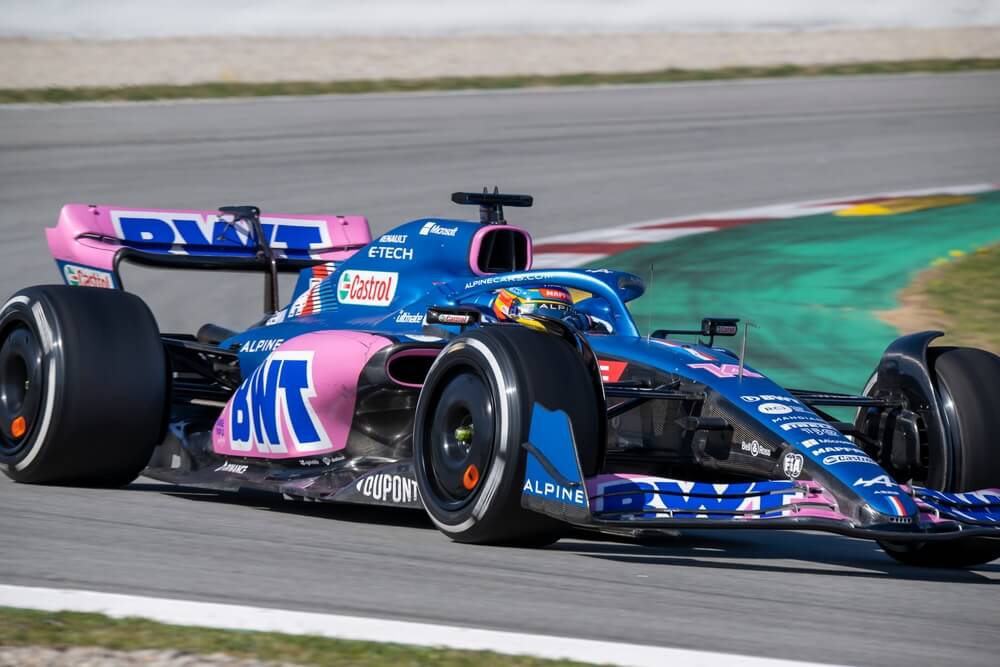In the high-stakes world of Formula One racing, every millisecond counts. The quest for speed and performance has led to remarkable advancements in aerodynamics, and one design element that has revolutionized the sport is the S-Duct. In this article, we will explore the intricacies of the S-Duct, its design principles, benefits, challenges, and its impact on the world of Formula One. So, buckle up and prepare to dive into the fascinating world of S-Ducts.
Table of Contents
Watch this video to learn more about the s-duct.
Understanding the S-Duct
The S-Duct, as the name suggests, resembles the letter ‘S’ and is an essential part of the car’s aerodynamic package. Its primary function is to optimize airflow and manage the boundary layer that forms on the car’s surfaces. By channeling air through the car’s body and directing it to desired locations, the S-Duct helps enhance aerodynamic efficiency, stability, and overall performance.
When compared to other intake designs, such as the traditional NACA duct, the S-Duct stands out for its ability to produce a more uniform airflow. This uniformity reduces turbulence and increases the effectiveness of other aerodynamic components like wings and diffusers.
Evolution of Aerodynamics in Formula One
Formula One has always been at the forefront of aerodynamic innovation. Over the years, teams have continuously pushed the boundaries of design to gain a competitive edge.
From the iconic wings and diffusers to ground effects, the evolution of aerodynamics in Formula One has been relentless. One significant leap forward came with the introduction of the S-Duct.
Design Principles of the S-Duct
The design of an S-Duct is a result of meticulous engineering and aerodynamic principles. Let’s delve into the key design considerations:
Anatomy of an S-Duct
An S-Duct consists of several components, including an inlet, a curved duct, and an outlet. The inlet is strategically positioned to capture high-pressure air from the car’s frontal area. The curved duct guides the air through an intricate path, taking advantage of the car’s bodywork contours. Finally, the outlet releases the channeled air in a controlled manner.
Fluid Dynamics Principles
To optimize airflow, designers employ fluid dynamics principles. The curved shape of the duct allows for smooth and laminar flow, reducing drag and turbulence. Additionally, the positioning of the S-Duct is crucial, as it must take into account factors such as air pressure differentials and minimizing the impact on the car’s overall balance.
Importance of Positioning and Shape Optimization
The precise positioning of the S-Duct is a critical aspect of its design. It should be strategically placed to capture clean, high-pressure air, while avoiding disturbances from other components. Furthermore, shape optimization involves finding the optimal curvature and dimensions that maximize airflow efficiency and minimize drag.
Benefits of the S-Duct
Implementing an S-Duct brings several advantages to a Formula One car’s aerodynamic performance. Let’s explore some of the key benefits:
Improved Airflow Management
The S-Duct plays a vital role in managing the airflow around the car. By carefully directing the air to specific areas, such as the front wing or the rear diffuser, teams can enhance downforce generation and reduce drag. This improved airflow management contributes to better stability and handling characteristics, allowing drivers to push the limits on the track.
Enhanced Stability and Handling
The S-Duct’s influence on aerodynamics translates into improved stability at high speeds. By minimizing the disruption of airflow over critical areas, the car maintains a more predictable behavior, enabling drivers to navigate corners with precision and confidence. This enhanced stability is a key factor in gaining a competitive edge in Formula One.
Impact on Top Speed and Acceleration
Aerodynamic efficiency directly affects a car’s top speed and acceleration capabilities. By optimizing the airflow with the S-Duct, teams can reduce drag and increase the car’s overall top speed potential. Additionally, improved downforce from effective S-Duct implementation enhances traction, enabling quicker acceleration out of corners.

Challenges and Limitations
While the S-Duct brings numerous advantages to Formula One teams, it also presents challenges and limitations that must be carefully considered:
Manufacturing Complexity and Costs
Designing and manufacturing an S-Duct involves intricate engineering processes and specialized materials. The complex shape and integration into the car’s bodywork require meticulous craftsmanship and precision. Consequently, the manufacturing costs associated with S-Ducts can be significant, posing financial challenges for smaller teams.
Trade-offs Between Performance Gains and Weight Penalties
Integrating an S-Duct into a Formula One car comes with a trade-off between performance gains and weight penalties. The additional components, such as the duct and its support structures, add weight to the car. Teams must carefully balance the aerodynamic benefits with the weight increase to ensure overall performance optimization.
Reliability and Maintenance Considerations
The S-Duct’s intricate design and integration pose reliability and maintenance challenges. The duct’s exposed position makes it vulnerable to debris and potential damage during races. Ensuring proper maintenance and robustness of the S-Duct system becomes crucial to avoid performance degradation or failure during critical moments.
Case Studies: Successful S-Duct Implementations
Several Formula One teams have successfully harnessed the power of the S-Duct to gain a competitive edge. Let’s examine a few notable case studies:
Team A: Innovating for Success
Team A implemented an S-Duct system that revolutionized their aerodynamic package. By optimizing the position and shape of the duct, they achieved exceptional airflow management, resulting in improved cornering speeds and increased downforce. This implementation contributed significantly to their championship-winning season.
Team B: Balancing Performance and Reliability
Team B faced the challenge of optimizing S-Duct performance while ensuring reliability. Through meticulous design and engineering, they achieved a balance between performance gains and robustness. This approach allowed them to consistently score podium finishes while minimizing maintenance issues.
Recent Innovations and Future Trends
The world of Formula One is constantly evolving, and the S-Duct is no exception. Here are some recent innovations and future trends related to S-Duct technology:
Active S-Duct Systems
Researchers and engineers are exploring the integration of active S-Duct systems. These systems dynamically adjust the airflow path based on real-time data, optimizing performance in various track conditions. This adaptive approach provides teams with a competitive advantage by fine-tuning aerodynamics on the fly.
Integration with Hybrid Powertrains and Energy Recovery Systems
As Formula One embraces hybrid powertrains and energy recovery systems, the integration of the S-Duct becomes even more crucial. Designers are exploring innovative ways to combine the benefits of S-Duct technology with the demands of hybrid power units, maximizing overall performance and efficiency.
Potential Areas for Further Research and Development
The pursuit of aerodynamic excellence continues to drive research and development in Formula One. Researchers are focusing on areas such as advanced flow visualization techniques, computational fluid dynamics simulations, and materials science to further refine S-Duct design and performance.
Frequently Asked Questions
1: What is an S-Duct in Formula One?
2: How does the S-Duct improve aerodynamic performance?
3: How does the S-Duct compare to other intake designs?
4: What are the key design principles of the S-Duct?
Conclusion
The S-Duct has emerged as a game-changer in the world of Formula One aerodynamics. Its ability to optimize airflow, enhance stability, and improve overall performance has made it a sought-after design element. While challenges exist, Formula One teams continue to push the boundaries of S-Duct technology, seeking every possible advantage in their quest for victory. As the sport evolves, we can expect further innovations in S-Duct design, integration and performance.
Article sources
Learn more about Formula One
Want to learn more about F1? Then visit our Formula 1 glossary and dictionary.



